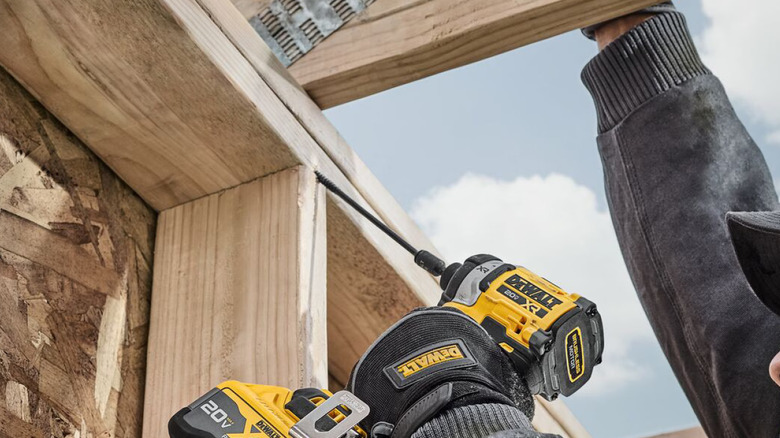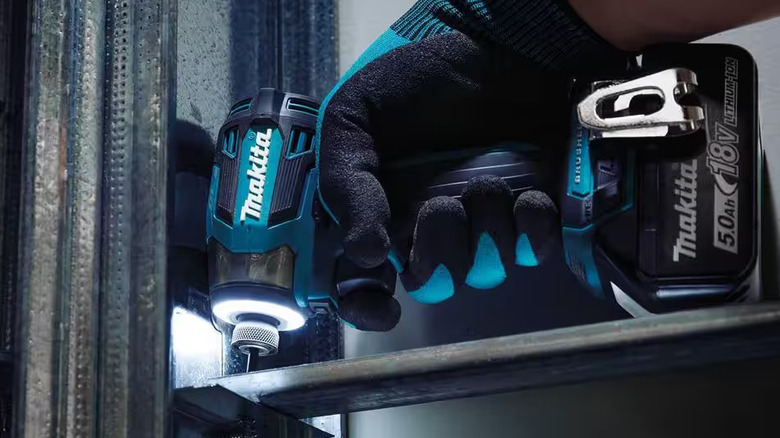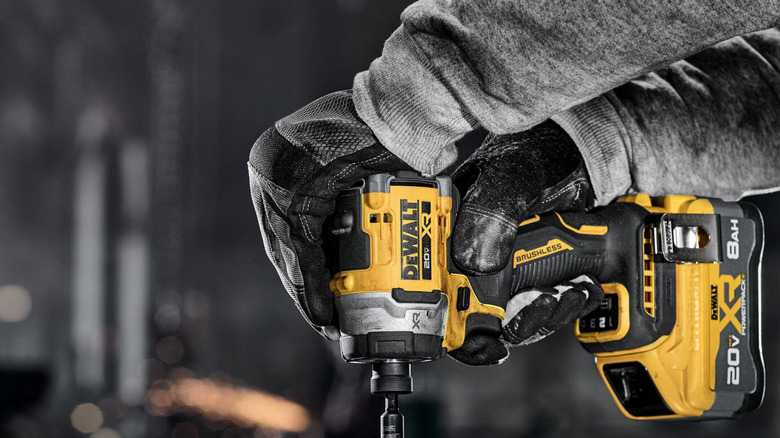DeWalt Impact Driver Versus Makita: The Choice Most Pros Make
We may receive a commission on purchases made from links.
At first glance, an impact driver looks a lot like a drill, but this powerful tool is seldom used for making holes. While there are several things you should know before buying an impact driver, the key difference is at the front end. Instead of a chuck for drill bits, there's a hex socket to accept driver bits. So rather than drilling holes, an impact driver is focused on fastenings — things like lag bolts and the kind of long screws used in decking that soon sap the power out of a standard drill driver.
Not surprisingly, there are dozens of models on the market. When it comes to the tools a professional would choose, DeWalt and Makita are two names that regularly feature among the best power tool brands available. Both offer extensive ranges of impact drivers, from compact 12V models to high-performance 18V and 20V options. Both brands are also recognized for reliability and durability.
So which choice would most pros make? The answer isn't straightforward. Typically, Makita is recognized as one of the leaders in battery technology for cordless tools. DeWalt tools often win when it comes to outright power. If we had to pick the brand that tops most independent reviews, DeWalt just edges it. However, this is specifically about impact drivers, so we need to pitch the top tool from each brand head-to-head to find a winner.
DeWalt 20V Max XR Impact Driver vs Makita 18V XDT20Z Impact Driver
It's natural to assume that a 20V tool is more powerful than an 18V rival, but the raw output of both batteries is very similar. DeWalt chooses to quote no-load voltage, whereas Makita uses the nominal (operational) figure. A key number for impact drivers is torque (twisting force). The DeWalt delivers 2,500 inch pounds (in-lbs). The Makita has 1,590 in-lbs. Impacts per minute (the hammer action) is another factor. DeWalt's maximum is 4,500 IPM. The Makita's is 3,800 IPM. Although speed is less important, the DeWalt has three and runs to 3,800 rpm, whereas the Makita has four (and claims to offer better control) up to 3,600 rpm.
So as might have been expected, the DeWalt is the more powerful impact driver, and for many pros that will be a deciding factor. It also helps that the DeWalt 20V Max XR impact driver can currently be found for around $135, while the Makita 18V XDT20Z impact driver costs $234 (both without battery or charger). The Makita has the technology advantage with selectable modes for specific tasks, so it offers precise control over driving long screws to help when building the perfect deck, for example. For those who rely on accuracy rather than brute force, that could make a big difference. In truth, both are exceptional tools, and which one the pros choose will largely depend on the type of work they do.
Methodology
I am House Digest's carpentry and remodeling expert. I have a thorough understanding of how impact drivers work and the performance expected of them. To support my experience, we researched the ranges from both brands to make sure we had the latest information about tool development. We also analyzed the pros and cons of each tool to determine which customers might get more out of specific features.
We checked specifications at official websites to understand exactly what sets these two tools apart, and we visited popular independent tool reviews for their feedback. Normally we would also take customer opinions into account, but while the DeWalt impact driver has been around for a while and regularly gets high ratings, the Makita impact driver is relatively new, so there are far fewer comments. That said, older Makita models consistently score well for customer satisfaction, and there's no reason to believe the new model would be any different.


